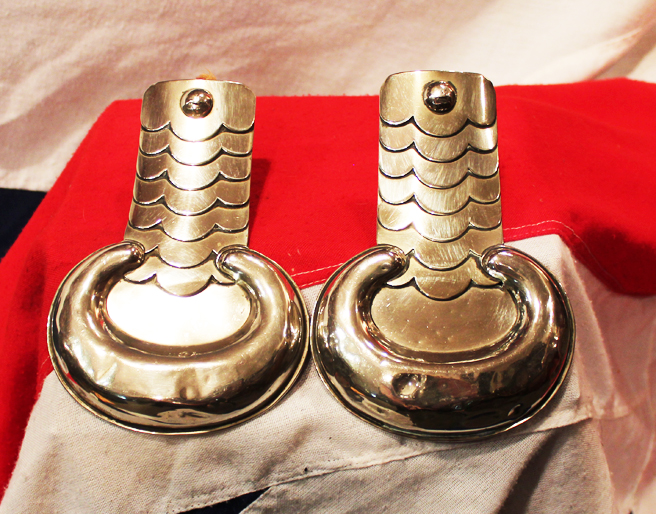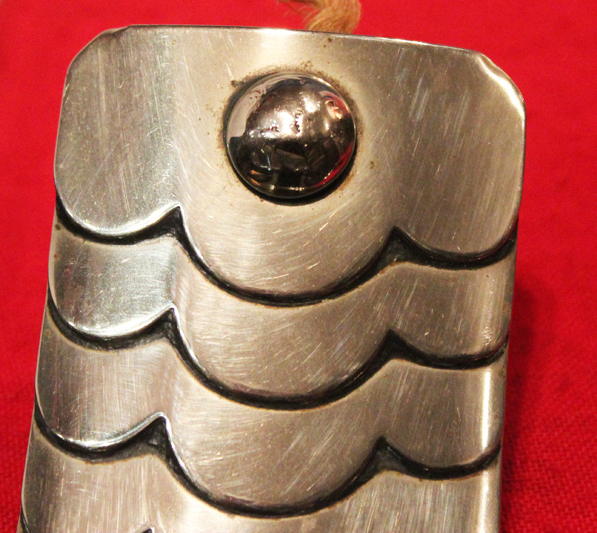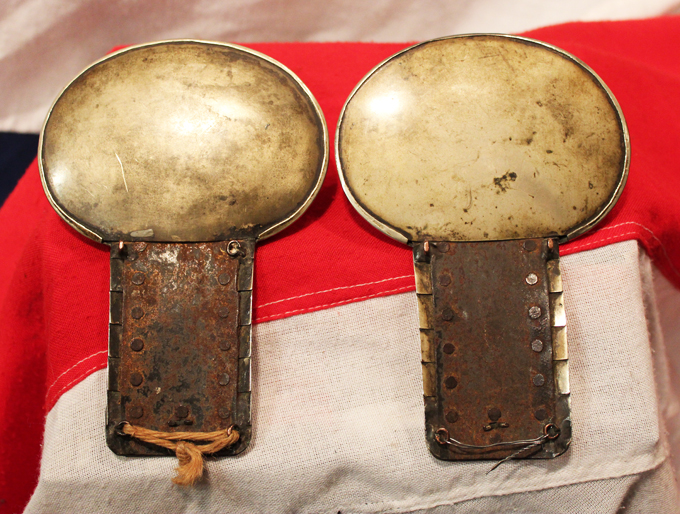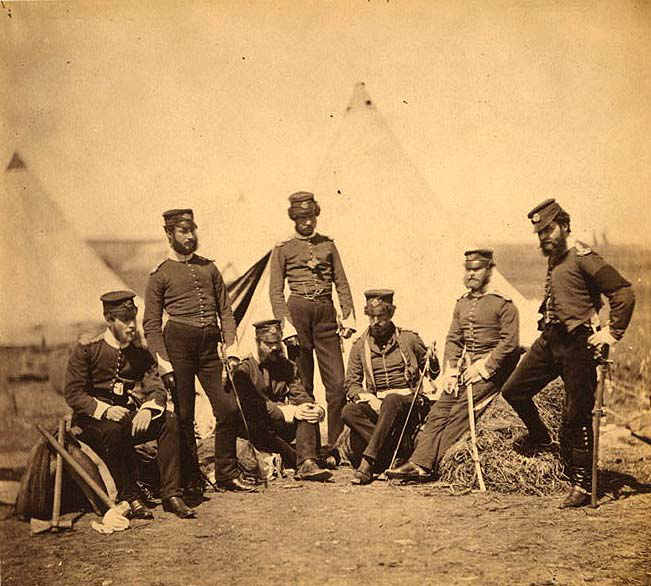A Very Good Pair of Early Victorian Crimean War, British Dragoon Tunic Shoulder Scales
Epaulette is a type of ornamental shoulder piece or decoration used as insignia of rank by armed forces and other organizations. Epaulettes bear some resemblance to the shoulder pteruges of ancient Roman military costumes. However their direct origin lies in the bunches of ribbons worn on the shoulders of military coats at the end of the 17th century, which were partially decorative and partially intended to prevent shoulder belts from slipping. These ribbons were tied into a knot which left the fringed end free. This established the basic design of the epaulette as it evolved through the 18th and 19th centuries.
From the 18th century on, epaulettes were used in the French, British and other armies to indicate rank. The rank of an officer could be determined by whether an epaulette was worn on the left shoulder, the right shoulder or on both. Later a "counter-epaulette" (with no fringe) was worn on the opposite shoulder of those who wore only a single epaulette. Epaulettes were made in silver or gold for officers, and in cloth of various colours for the enlisted men of various arms. By the early eighteenth century, epaulettes became the distinguishing feature of an officer, leading to officers of military units without epaulettes to petition their government for the right to wear epaulettes, to ensure that they would be recognized as officers. Certain cavalry specialties wore flexible metal epaulettes referred to as shoulder scales such as these. During the Napoleonic Wars and subsequently through the 19th century, grenadiers, light infantry, voltigeurs and other specialist categories of infantry in many European armies wore cloth epaulettes with wool fringes in various colours to distinguish them from ordinary line infantry. "Flying artillery" wore "wings", similar to an epaulette but with only a bit of fringe on the outside, which matched the shoulder seam. Heavy artillery wore small balls representing ammunition on their shoulders.
Code: 18972
345.00 GBP




